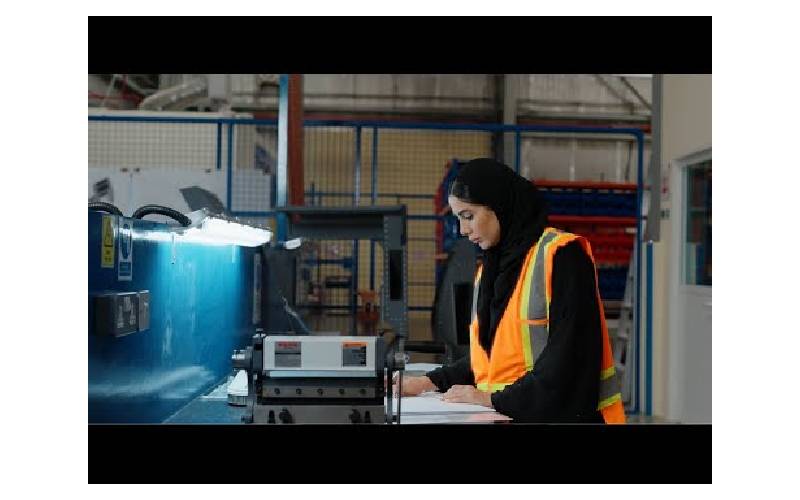In the realm of video production, the visual components often receive the most attention, with meticulous planning and execution dedicated to crafting stunning visuals and compelling narratives. However, the importance of sound in video production is equally vital, playing a crucial role in shaping the audience’s experience. Sound encompasses dialogue, ambient noise, music, and sound effects, all of which work together to create a cohesive and immersive viewing experience. Poor audio quality can detract significantly from even the most visually striking video, underscoring the necessity for high-quality sound production. This exploration delves into various aspects of sound in video production, highlighting its importance and offering insights into achieving exceptional audio quality.
High-Quality Audio Enhances The Overall Impact Of Video Production
High-quality audio is fundamental to enhancing the overall impact of video production. Clear and crisp sound ensures that dialogue is understandable and that the nuances of speech, such as emotion and tone, are effectively conveyed. When viewers struggle to hear or comprehend spoken words, their engagement with the content diminishes, regardless of how visually captivating the video might be. Moreover, ambient sounds and sound effects add layers of realism and depth, immersing viewers in the scene and making the video more relatable and believable. High-quality audio also supports the narrative by guiding the audience’s emotional response. For instance, subtle background music can heighten tension, evoke sadness, or enhance joy, making the storytelling more impactful. Thus, investing in good audio recording and mixing techniques is essential for producing videos that resonate with audiences and leave a lasting impression.

Sound Design In Creating Immersive Experiences In Video Production
Sound design is a crucial element in creating immersive experiences in video production. It involves the strategic use of audio elements to support the visual narrative and enhance the viewer’s sensory experience. Effective sound design goes beyond simple background noise or music; it includes the meticulous crafting of soundscapes that transport the audience into the world of the video. For example, the sound of footsteps crunching on gravel, the distant hum of traffic, or the rustle of leaves in the wind can make a scene feel more lifelike and immersive. Sound designers often use a combination of recorded sounds, synthesized audio, and effects to build these auditory environments. By carefully selecting and manipulating these sounds, they can control the viewer’s perception and emotional response, making scenes more engaging and memorable. This immersive quality is what distinguishes high-quality video production and captivates audiences, drawing them deeper into the story being told.
Aspects Of Sound In Video Production: Microphones, Mixers, And More
Understanding the technical aspects of sound in video production is essential for achieving high-quality audio. The process begins with selecting the right microphones, as different types are suited for various recording environments. For instance, lavalier microphones are ideal for capturing dialogue in interviews or close-up shots, while shotgun microphones are better for capturing sound from a distance. Once the audio is recorded, mixers and audio interfaces play a crucial role in balancing and refining the sound. These devices allow sound engineers to adjust levels, equalize frequencies, and add effects to ensure clarity and consistency. Additionally, the placement of microphones, the acoustics of the recording environment, and the quality of recording equipment all influence the final audio output. Post-production techniques such as noise reduction, reverb addition, and audio synchronization are also vital in polishing the sound. A thorough understanding of these technical elements enables video producers to capture and deliver pristine audio, significantly enhancing the overall quality of the video.
Common Audio Mistakes In Video Production And How To Avoid Them
Common audio mistakes in video production can undermine the viewer’s experience, even if the visuals are top-notch. One frequent issue is poor microphone placement, which can result in muffled or distant sound. To avoid this, ensure that microphones are positioned correctly and at an optimal distance from the sound source. Another mistake is not monitoring audio levels during recording, leading to clips that are too quiet or distorted by being too loud. Using headphones to monitor audio in real-time can help detect and correct these issues immediately. Background noise is another common problem; choosing quiet locations for filming and using directional microphones can minimize unwanted sounds. Additionally, neglecting to use pop filters can result in harsh plosive sounds during speech recording. In post-production, failing to balance audio levels or apply noise reduction can leave the final product sounding amateurish. By being aware of these potential pitfalls and taking proactive steps to address them, producers can ensure their video’s audio is clear, professional, and enjoyable for the audience.
Significance Of Music And Sound Effects In Video Production Storytelling
Music and sound effects play a pivotal role in storytelling within video production. Music sets the tone and evokes emotions, guiding the audience’s feelings throughout the narrative. A well-chosen score can underscore the drama, heighten tension, or provide relief, enhancing the story’s emotional impact. Sound effects, on the other hand, add realism and detail to the visual elements. The clinking of glasses, the roar of a crowd, or the subtle creak of a door can make scenes more convincing and immersive. Moreover, sound effects can be used symbolically or thematically, such as a recurring sound motif that signals a character’s presence or a significant plot development. The strategic use of music and sound effects helps to build atmosphere, convey subtext, and reinforce the story’s themes. By integrating these auditory elements thoughtfully, video producers can create richer, more nuanced narratives that engage and resonate with audiences on a deeper level.
Achieving Perfect Synchronization Of Sound And Visuals In Video Production
Achieving perfect synchronization of sound and visuals in video production is critical for maintaining the illusion of reality and ensuring a seamless viewing experience. One fundamental technique is the use of a clapperboard during filming, which provides a visual and auditory cue to synchronize the audio and video tracks in post-production. In digital workflows, software tools such as timecode synchronization and auto-sync features in editing programs can streamline this process. It’s also important to record sound separately using high-quality external audio recorders, then sync it with the video footage during editing. Ensuring that dialogue matches lip movements precisely and that sound effects align with corresponding visual actions enhances the realism of the video. In musical sequences, matching the audio track to the performers’ movements and ensuring that the beat and tempo are consistent with the visuals are crucial. By employing these synchronization techniques, video producers can create a cohesive and professional final product that maintains viewer immersion and engagement.
Professional Sound Equipment Is Crucial For Successful Video Production
Investing in professional sound equipment is crucial for successful video production because high-quality audio significantly enhances the overall production value. Professional-grade microphones, audio recorders, and mixers capture sound with greater clarity and fidelity, reducing the need for extensive post-production corrections. Superior equipment is designed to handle a wide range of audio conditions, ensuring consistent performance in various environments. Additionally, professional sound equipment often includes features such as noise reduction, adjustable sensitivity, and high-pass filters, which improve the quality of recordings. While the initial investment may be substantial, the long-term benefits include fewer reshoots, less time spent on audio editing, and ultimately, a more polished final product. Investing in quality sound equipment also positions a production team as more professional and capable, potentially attracting higher-profile clients and projects. Ultimately, professional sound equipment is an investment in the quality and success of video productions, ensuring that the audio matches the high standards set by the visuals.
Conclusion
The importance of sound in video production cannot be overstated. High-quality audio enhances the overall impact of videos, making them more engaging and memorable. From understanding technical aspects and avoiding common mistakes to leveraging sound design and synchronization techniques, every detail contributes to the final product’s success. Music and sound effects further enrich the storytelling, creating immersive and emotionally resonant experiences. Investing in professional sound equipment ensures that audio quality meets the high standards of modern video production. By prioritizing sound, video producers can create exceptional content that captivates and resonates with their audiences, solidifying the role of audio as a cornerstone of effective video production.


